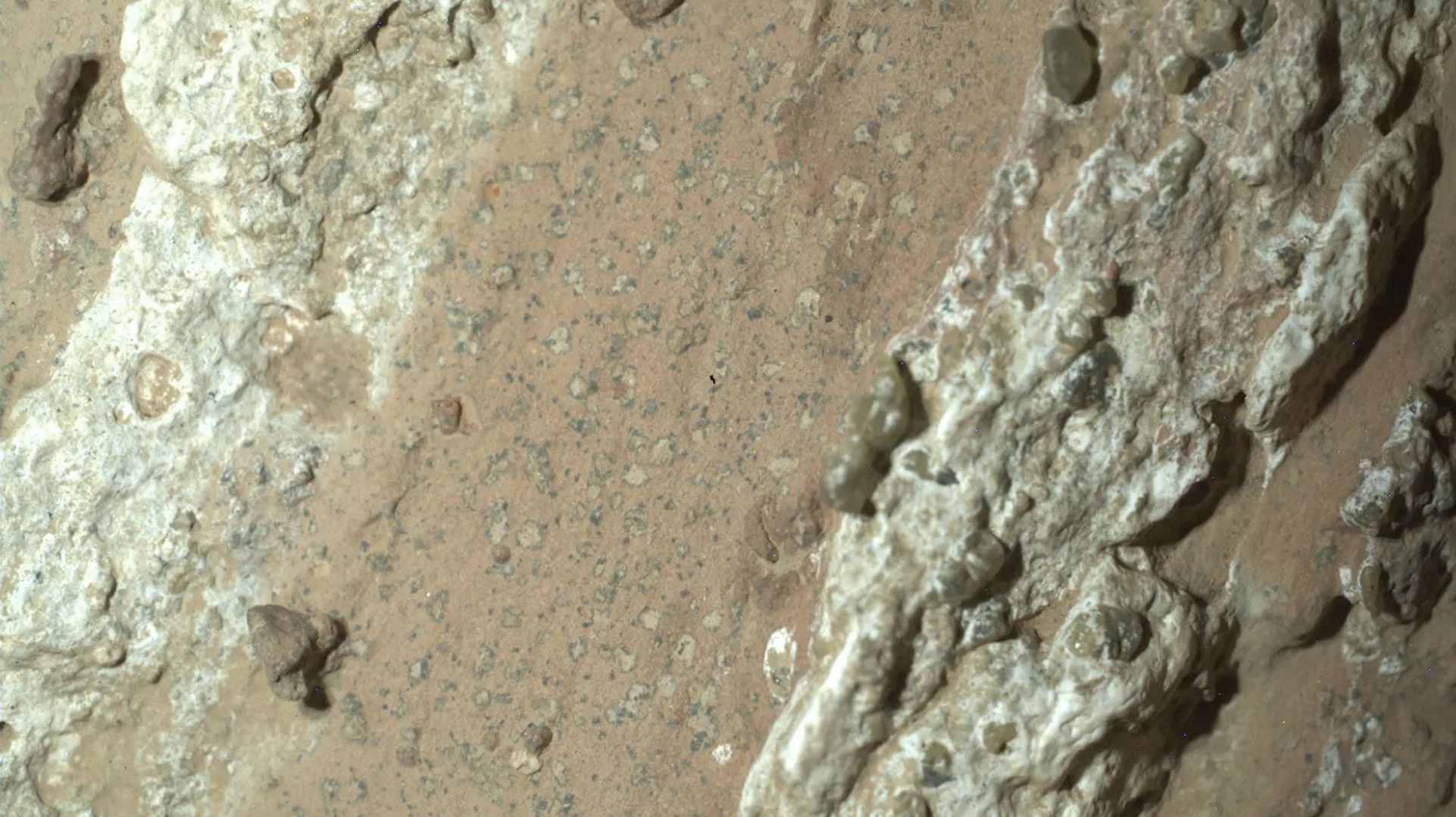NASA’s Perseverance rover has found an “intriguing” rock on the surface of Mars that may have supported microbial life billions of years ago, according to data released Friday by the U.S. space agency.
The rock was collected by the six-wheeled robot on July 21 in the northern region of Neretva Vallis, believed to have been an ancient river valley about 400 meters (1,300 feet) wide millions of years ago.

The space agency explained that the first analyses carried out with the rover’s instruments reveal that “the rock has qualities that meet the definition of a possible indicator of ancient life.”
“The rock exhibits chemical signatures and structures that It could have been formed by life billions of years ago.when the area explored by the rover contained running water,” NASA’s Jet Propulsion Laboratory (JPL) announced.
The US agency was quick to point out that further research is needed to determine whether there are indeed signs of microscopic life in the arrowhead-shaped rock, which measures approximately 1 by 0.6 metres.
And the traces on the rock that provide clues about possible microscopic life may also have been formed by “non-biological processes,” NASA said.
Still, the rock, nicknamed Cheyava Falls, is “the most intriguing, complex and potentially important rock yet investigated by Perseverance,” said Ken Farley of the rover’s science team.
Large white veins of calcium sulphate appear throughout the rock, among which is a material whose reddish colour suggests the presence of hematite, one of the minerals that gives Mars its characteristic rusty hue.
The rover took a closer look at these red regions and found “dozens of whitish, millimeter-sized, irregularly shaped patches, each surrounded by black material, similar to the spots of a leopard,” the space agency explained.
Subsequent analyses carried out with Perseverance instruments give clues that these The “black halos” contain iron and phosphate, which surprised scientists.
“On Earth, these types of rock features are often associated with the fossilized record of microbes living underground,” said David Flannery, an astrobiologist and member of the Perseverance science team.
Farley noted that there are still many questions about the characteristics of the rock, which were studied backwards using the rover’s tools, which have already exhausted their capabilities.
For a more complete study, it is necessary to bring it back to Earth, which will also allow us to fully understand what happened in the Jezero crater, where Perseverance is located and where water is estimated to have existed millions of years ago.
NASA is in the midst of a campaign to send a mission to return samples collected by Perseverance.
The latest plan he drew up involves up to 11 billion dollars (10.1 billion euros at the current exchange rate), which represents a budgetary challenge.
Source: Observadora
